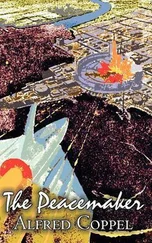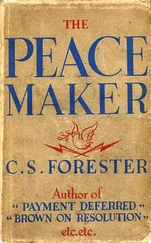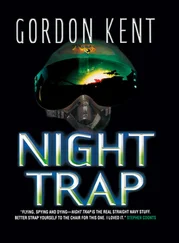“We’re all going our separate ways,” Alan said. It saddened him. “You blink and everything’s changed.”
She pulled him closer and then rocked them both with her shoulder and hip, as if shaking him to make him forget such things. “How’d you like to take a horny helo pilot to bed?” she said.
“Girls get pregnant that way.”
“Yeah, I’d heard that.” She tipped her head back. “I sort of had it in mind.”
“Really?” He smiled back. Rose wanted six children, she said, a houseful; he thought three, max. They had only one.
“It works out just right if we’re quick.” Motherhood and a naval career could be made to mesh, she meant. “We might have to work at it all weekend.”
“You’re on.” They walked into the house with their arms around each other’s waist. Inside, the six empty glasses stood in a circle.
Part Two Turning the Wheel
June – July
After the dinner that was supposed to have been O’Neill’s farewell but that became before it was over a farewell for everybody, they all went their ways. O’Neill was the first to vanish, into what he called “the wilds of Africa.” Dukas was suddenly too busy to answer his telephone. Bea Peretz had a long talk with her daughter and took her away for a week at Disney World, where she turned out to be the daughter she’d always loved.
Even Rose went away. Her new duty station was in Columbia, Maryland, a “new town” originally beyond the Washington, DC sprawl and now part of it, a suburb that was like stepping into some mediocre planner’s dream of about 1960, a small town the way a nature walk is nature. It was too far from Little Creek for her to commute, and so while Alan finished his tour with the air wing, Rose got herself a furnished apartment and tried to cover her lack of a home life with work. That was Rose’s solution to all problems—work.
Left to himself, Alan put their house on the market and got to know his son again. He drove around, too, getting his land eyes back, as he thought of it—learning that the world was not only gray p’ways and crowded rack rooms, and not only young people in blue and khaki, but that it had both the very old and the very young, the slovenly and the neat, the male and the gloriously, non-militarily female. The “boyz in the hood” look had really taken hold while he was away; every male under thirty and a lot of females, black and white, seemed to be wearing baggy pants and oversize T-shirts. He loved it. It was so different from the boat he wanted to sing and often did, just driving around with the radio on, singing and whacking his hands in time on the steering wheel.
In a little while, he would go to the new job at the Pentagon. He and Rose had agreed that they would take their time finding a new place to live, somewhere between his new post and hers. When he drew a circle on a map that touched Columbia and the Pentagon, the center was out there somewhere in Maryland. He figured it couldn’t be worse than Little Creek. Still, he wondered what it was like to live where you really wanted to.
She came home on weekends, and after several of them she said she was pretty sure she was pregnant. Mikey, Alan, and the dog were all delirious to have her around. He asked her if she felt like a queen and she said no, after all it was only what she deserved.
They saw Mike Dukas a couple of times before he went to Bosnia. Alan saw him in Washington when he was going back and forth between his old duty and the new, as well. Mike was rushing around, learning a little Serbo-Croat to go with his Greek, getting outfitted by the marines in something approaching combat gear, getting briefings at State and DIA. He was pumped. Alan felt the nipping of envy, morosely aware that he was heading into three years of briefing admirals and putting together dailies. It was a good career move, but it wasn’t action . He told Dukas so at their last meeting.
“You’re a fucking action junkie!” Dukas said to him. They were wolfing down crabcakes. “Where’d you get it from? Life isn’t a goddam comic book, Al!”
“I’m not an action junkie!”
“You’re an addict. An adrenaline-rush addict.”
“Bullshit.”
“I’ve seen you!”
“Well, I’m going cold-turkey for three years, okay? And you, you Greek slob—!”
Dukas picked a bit of shell out of his teeth and put it on his plate. He leaned his round head toward Alan and growled, “I don’t want action! I just want to do some good!”
The next week, he was gone.
O’Neill was apparently in Africa, but Alan didn’t hear from him.
He had almost three weeks’ leave, but when his leave time was up and he went back to the air wing, it was a ghost. There was a lot of cleaning-up to do, old reports and pubs and general crap, but the life was out of it. He haunted the offices for a few days, thought of reporting to his new job early, resisted that (already leery of it, flinching from it) and volunteered to fill in at Atlantic Fleet Headquarters to keep himself from going bats in an empty office.
It gave him several days on a different point of the great wheel. He was sent to the intel sections where they were planning the next battle group’s pre-deployment “fleet exercise,” called officially Atlantic Fleet Battle Group Exercise 3–96, known now to everybody in the place as Fleetex. It was an interesting point to intersect the next BG, he found—looking at it not from the point of view of somebody on the carrier, but of somebody one step away from the strategic thinking of the Joint Chiefs.
Fleetex 3–96 existed then as an idea, expressed in a two-inch-thick, ring-bound planning book, five subordinate planning guides, and a rapidly increasing roomful of transparencies, viewgraphs, computer projections, maps, and graphics. He worked on one detail, and one that tickled him: figuring aircraft fuel consumption for eight dispersed supply points, of which one was to be a deep-draft, ocean-going oiler whose skipper was already designated in one of the pubs—Captain John H. Parsills, who, as a then commander, had been the first squadron skipper under whom he had ever served.
Wow! Skipper Parsills on an oiler! Here was the great wheel in one of its odder turns. Between being commander of a squadron and the captain of a carrier, a new 0–6 had to have experience as a deep-draft-vessel skipper, and the battle group’s oiler was often that ship. Fifteen years in the air, three years in the water!
Alan smiled. He didn’t even mind totting up fuel-consumption projections. Parsills had been a great guy, perhaps the finest CO he’d ever known. Helping him out, even on paper, was good.
Fleetex 3–96 was like a vast war game, with real ships and real aircraft for counters. It could best be understood by placing its master transparency, BG3/96-LL1, over its wide-view map (Exhibit 5). The map showed the Western Atlantic down to part of the Caribbean and north to the Carolinas. The transparency showed the Mediterranean, from Tripoli, Libya, north to the Adriatic and Venice. You put the transparency over the map, lined up the registration points, and saw the game scenario: Libya’s Gulf of Sidra thus became a bay in the outer Bahamas; Gibraltar was a spot in the northern waters, Bosnia both somewhere out in the Atlantic and, for hands-on bombing, the island of Vieques south of Puerto Rico. Reference to one of the planning books would reveal that a Canadian frigate and a British destroyer were to play opposing (Orange, read “Libyan”) forces, along with four smaller Bahamian gunboats, out of Nassau. ( Nice duty , he thought.) Opposing-force air strikes would come from Marine Corps and Navy F/A-18s at Cherry Point, Beaufort, and Jax, with refueling by USAF KC-10s, mostly reserves, flying from East Coast bases. The focus of two of the three phases of the exercise was a point in the Bay of Sidra that looked, to Alan, dangerously close to Libyan territorial waters. Designated merely “Alpha,” it had on at least one viewgraph a ship’s symbol. Without going through the stack of binders, he could see that what Fleetex 3–96 was going to mock up was some sort of provocative action involving a US or NATO vessel in Libya’s Gulf.
Читать дальше












